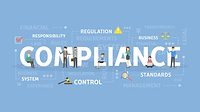In this new age of working from home, we are all looking for ways to connect with others.
At the start of the pandemic, many of us were flooded with virtual events ranging from happy hours and trivia nights to online dinner parties. My kids even got into the online event groove. They participated in virtual scavenger hunts in which they would race around the house looking for a purple pencil and a pink giraffe and then try to be the first to show them on the screen.
The pandemic has changed the way we work as well. Stanford reported in June that 42% of the U.S. labor force was working from home full time. And while many of us may already have had experience – pre-pandemic – working from home, virtual meetings this year changed as more of us began using cameras more regularly to see – and not just hear – our colleagues.
Virtual platforms are a great tool to bring people together. And at least initially, virtual backgrounds were fun. Many of us used virtual backgrounds to redecorate our homes, try out new styles and show off some of our personal interests. But the trend now seems to be shifting. My experience is that people are now increasingly using real backgrounds for virtual meetings.
Both virtual and actual backgrounds are acceptable during online meetings. However, there are at least four important things that work-from-home warriors should consider when choosing to share their real backgrounds given that many of us are still working from home offices.
Be Professional
The first is be professional. Our new work-from-home world makes this worthy of a reminder.
Look around to make sure you are comfortable sharing everything that remote viewers can see via your camera. And take a moment to consider whether others will be comfortable as well.
Small personal items are fine. They highlight your personality. But if you would not bring an item to your corporate office, ask yourself if you want it in the background of your virtual one.
Keep It Clean
Although many of us are spending a lot more time at home these days, we are busier than ever. So, we may not always have the opportunity to make every inch of our abodes camera ready.
But we can pick and choose where to set up our cameras and computers. That allows us to ensure that the areas in our homes that need Marie Kondo’s help are out of camera range.
So, remember to keep it clean – even if your house is not. Showing meeting attendees your dirty dishes, laundry or unmade bed is likely not the impression you want to leave them with.
Let There Be Light
Setting up shop in a dark room is fine for a photographer. But it’s no good if you’re a business professional trying to collaborate and communicate with coworkers, customers or partners.
That said, take the time to adjust lighting to ensure that people can see you. There is nothing worse than trying to visually connect with a colleague who appears to be sitting in the dark.
Share Ideas – But Avoid the TMI Trap
Virtual meetings are a great way to connect in real time with others. But be aware that you can inadvertently share too much information (TMI) through the personal items around you.
Be careful not to grant coworkers the same level of trust you give to family members or roommates. Put away bills and other personal papers that may be within view of your camera.
Even invitations, holiday cards and framed college diplomas can disclose more information about your life than you would normally share with colleagues, clients or vendors. These documents can provide information that could enable people to get additional data about you.
For example, if a person knows what college you attended, he or she could then visit your college website to get your personal email address or even your home address. This is particularly problematic considering that you don’t always know everyone who is on a virtual meeting and that some attendees may not be on camera and may be anonymous participants.
Using virtual collaboration tools will remain essential, so have fun with them, and be authentic. Just make sure that the image you are presenting is not more revealing than you’d like it to be.





